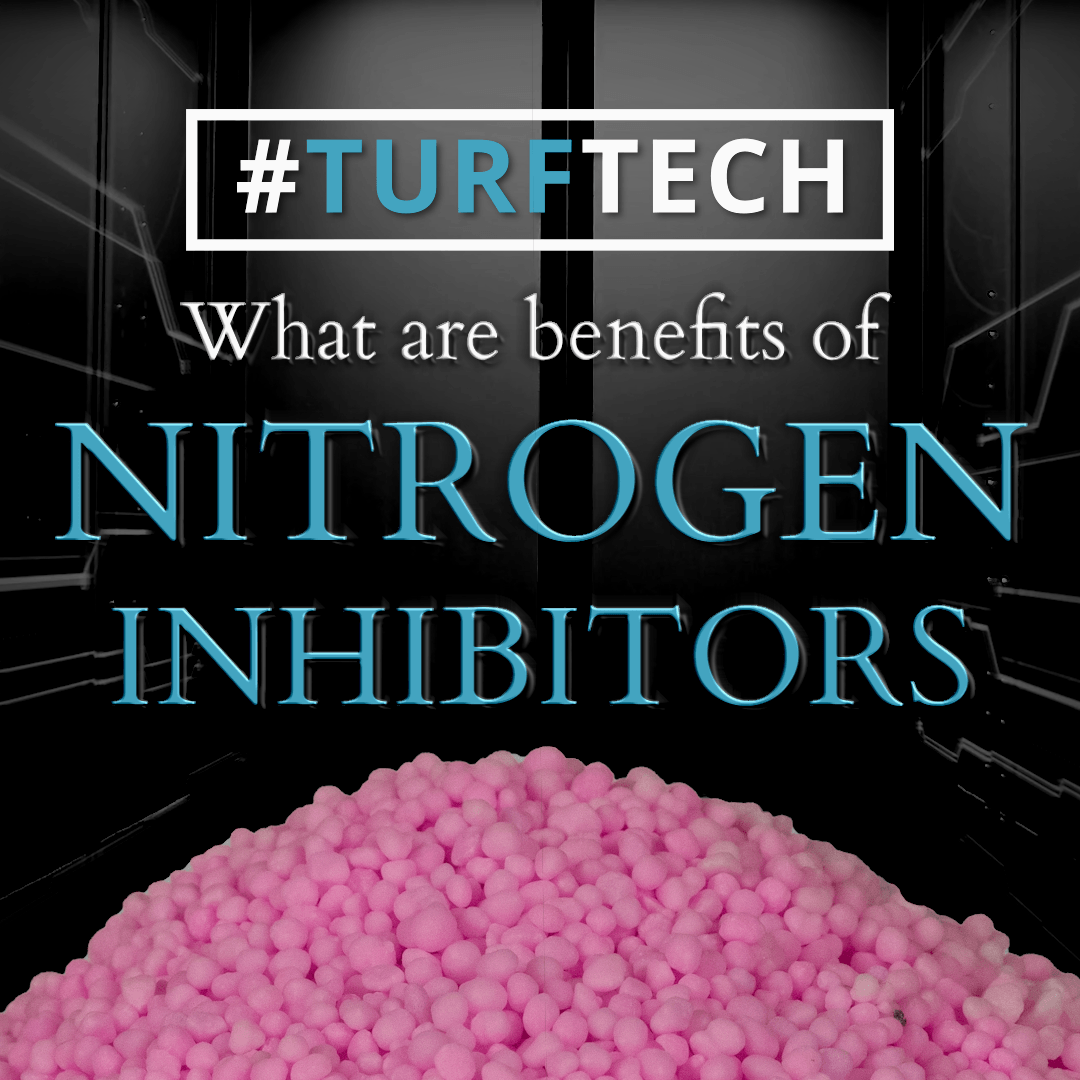#TurfTech - What are the benefits of Nitrogen Inhibitors?

WHAT IS A NITROGEN INHIBITOR?
A nitrogen inhibitor is a substance used to inhibit the biological oxidation of ammonium nitrogen (NH4-N) to nitrate nitrogen (NO3-N) in soil (this biological oxidation process is known as Nitrification) as well as help manage the conversion of urea to ammonia and carbon dioxide until adequate rain or irrigation can occur. To put it more simply, this just means it slows down nitrogen from being lost to the atmosphere through volatilization prior to water being applied to the fertilizer as well as working to slow soil bacteria from converting ammonium into nitrate, which is highly subject to denitrification and leaching.
WHY IS THIS TECHNOLOGY IMPORTANT?
Nitrogen inhibitors are an important technology added to fertilizer because it allows the nitrogen in the NH4-N to be held tightly within the soil particles, ultimately letting nitrogen to be available longer for plants, increasing overall health of the plant. This technology helps manage the three main reasons for nitrogen loss to your grass: denitrification, volatilization and leaching.
INHIBITOR TECHNOLOGY
To provide the most efficient use of nitrogen for your plants, three different technologies are commonly used to help create nitrogen inhibitors. Here is the breakdown of the technology:
Urease Inhibitor: NBPT (n-butyl thiophosphoric triamide)
NBPT helps inhibit the conversion of urea to ammonia and carbon dioxide until adequate rain or irrigation can occur. This is done with a urease enzyme, which inhibits hydrolytic action on urea. When applied to soil it blocks the conversion of urea nitrogen lost by ammonia volatilization from a period of 1-2 weeks. Specifically helps manage volatilization (works above the ground).
Nitrification Inhibitor: DCD (dicyandiamide)
DCD is a substance used to help to inhibit the biological oxidation of ammonium nitrogen (NH4-N) to nitrate nitrogen (NO3-N). DCD specifically inhibits leaching and decertification (works in soil). No harm is done to microbes when DCD is applied to a lawn. In Allen Sutton’s presentation from The Fertilizer Institute, Urease and Nitrification Inhibitors he says:
In the soil DCD has a bacteriostatic effect on Nitrosomonas bacteria, i.e. the bacteria are not killed, but only depressed or inhibited in their activities for a certain period of time. Even several applications have only led to a depressive effect on Nitrosomonas bacteria (Sturm et al; 1944).
WHY USE NITROGEN INHIBITOR TECHNOLOGY?
Using fertilizer with nitrogen inhibitor technology can actively slow the rate at which the ammonia is converted to nitrate. By slowing the conversion process ammonia to nitrate, you are keeping that nitrogen in a more stable form that is not as vulnerable to losses, creating more efficient use of nitrogen for plants as well as reducing the emission of ammonia and greenhouse gases.
- NOTE: Nitrogen inhibitor technology is not a “cure-all” to nitrification. It is just one of many technologies used to manage nitrogen loss. Mother Nature, soil texture, weather, soil pH and the timing of a nitrogen application can affect your plants nitrogen uptake. These factors are always trying to undermine nitrogen availability to your plants through leaching, denitrification and volatilization.
GLOSSARY OF TERMS
- Ammonia: a nutrient that contains nitrogen and hydrogen; preferred nitrogen-containing nutrient for plant growth. Can be converted to nitrite (NO2 ) and nitrate (NO3) by bacteria, and then used by plants.
-
Nitrate:
the form of nitrogen that the plants can use that is taken up by the roots.
-
Urease: An enzyme that catalyzes the hydrolysis of urea, forming ammonia and carbon dioxide; present throughout soil and becomes active when Urea comes in contact with the soil.
-
Urea:
a chemical compound; a colorless, crystalline substance that is an inexpensive compound incorporated in mixed fertilizers to manage nitrogen release.
-
Hydrolysis:
The chemical breakdown of a compound due to water.
- Leaching:
this is caused when nitrate nitrogen (NO3-N) in soil is moved below that plant’s rooting zone. This can be cause by environmental concern if the problem persists.
- Denitrification:
this is caused when nitrate nitrogen(NO3-N) in soil is converted togas.
- Volatilization: When nitrogen(N) changes into ammonia (NH3) and escapes into the atmosphere.
Check out our infographic showing the Inefficient vs. Efficient Nutrient Uptake Cycle of Plants .
The TURFReport Highlights:
Additional Articles and Insights
















